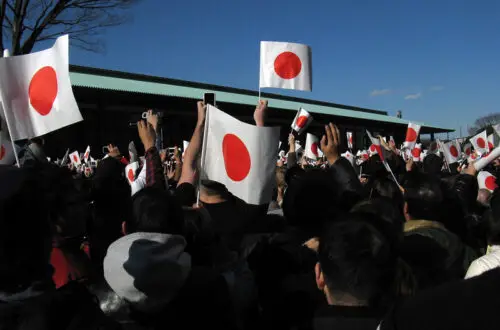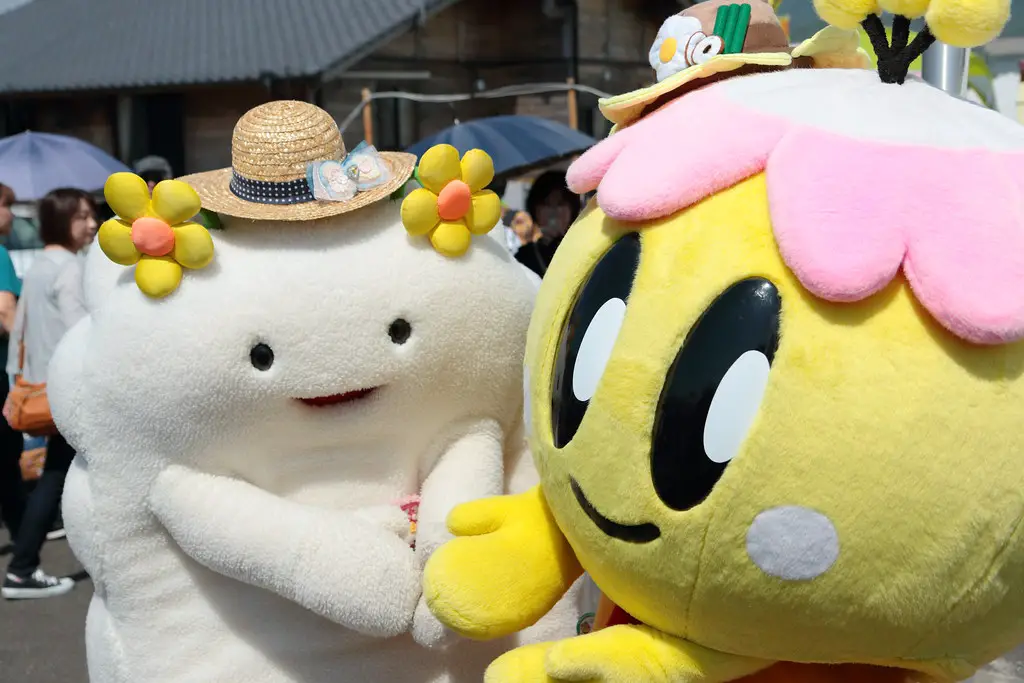
Japanse Mascots: The Weird, the Cute and the Popular
Japanese mascots are an extremely lucrative business. Moreover, their popularity has been on a constant rise for quite some time now. You can see them at sports events, local fairs, supermarkets – virtually everywhere! But, why are they so popular and what do they represent?
Japan’s love for cute fictional characters is exemplified in the popularity of their mascots. Japanese mascots are cute characters that represent cities, regions, businesses, events, but also values and ideals. However, this is also a lucrative business worth billions of dollars.
Quick Navigation
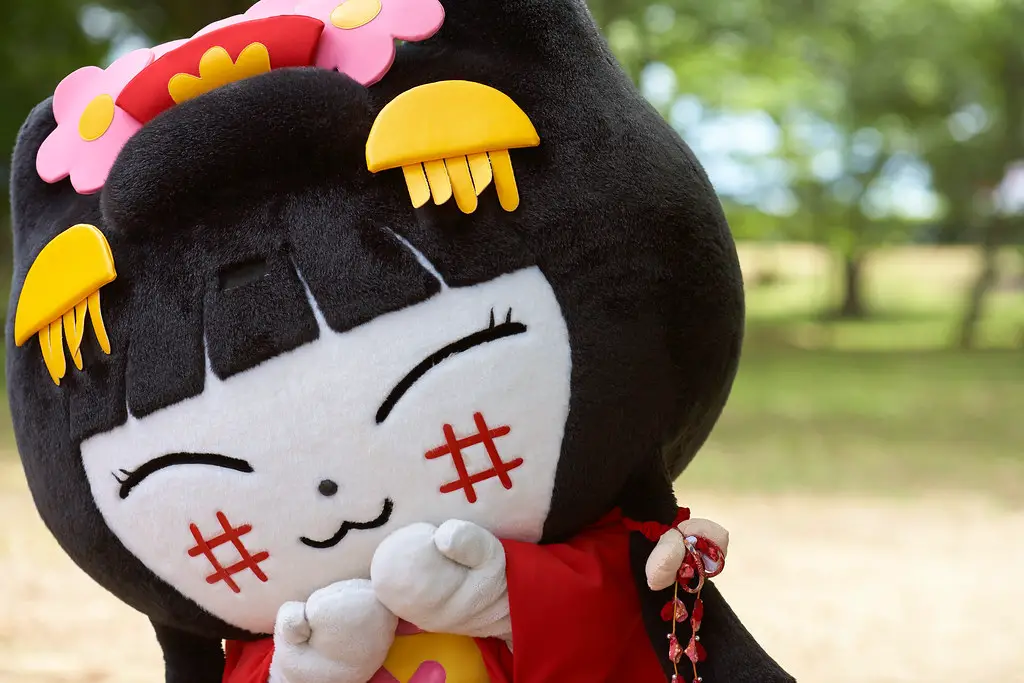
In this article, we will go more in-depth about the Japanese mascot industry. In addition, we will learn about its origins, its meaning, talk about popular mascots, and share some interesting facts. This subculture is very colorful, flamboyant, and full of surprises. Let’s start.
What Is a Japanese Mascot and How Does It Look?
A Japanese mascot is a cute, kawaii-like character used for promotional purposes. Japan currently has thousands of mascots. Each of them represents a certain city, organization, business, prefecture, or event. They are a combination of traditional Japanese folklore with modern anime elements.
Usually, mascots look like an animal or another fictional character. They also carry symbols that represent their particular city of origin. Japan’s mascot industry is also known as Yuru-chara. It is a combination of words yurui (gentle, light, laid-back) and character. As one would expect, mascots are very friendly, cute, and appealing. One famous example of a mascot is Kumamon.
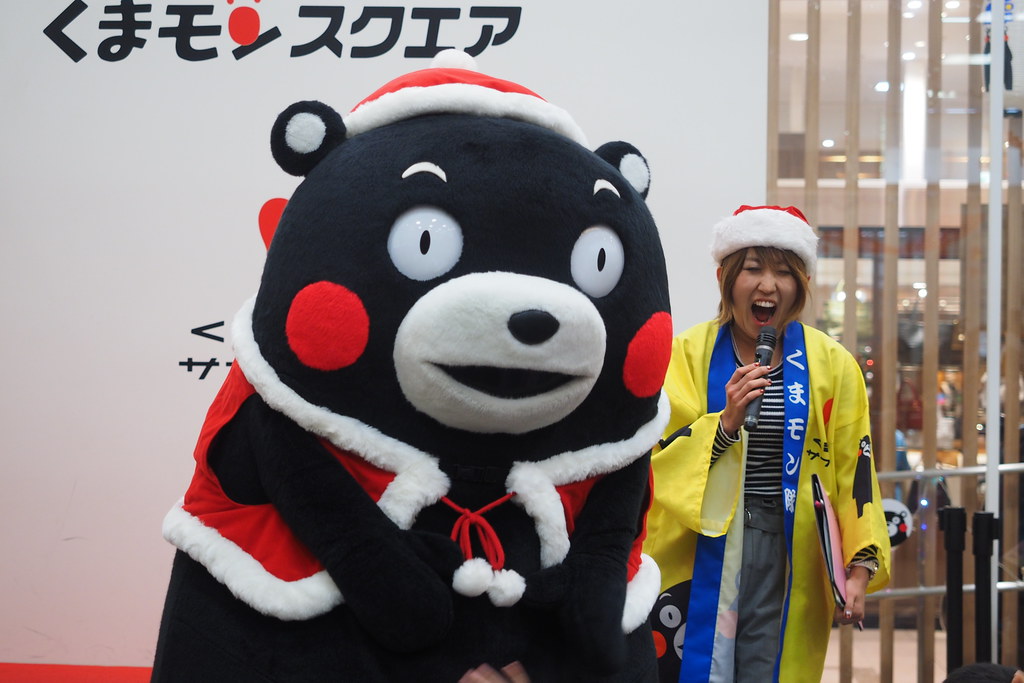
Understanding How Mascots Became So Popular in Japan
The popularity of these mascots is linked to Japan’s history with cute fictional characters. Japanese folklore is famous for its Yokai characters. Yokai are supernatural monsters, demons, and spirits. In fact, these creatures were used as inspiration for many modern mascots.
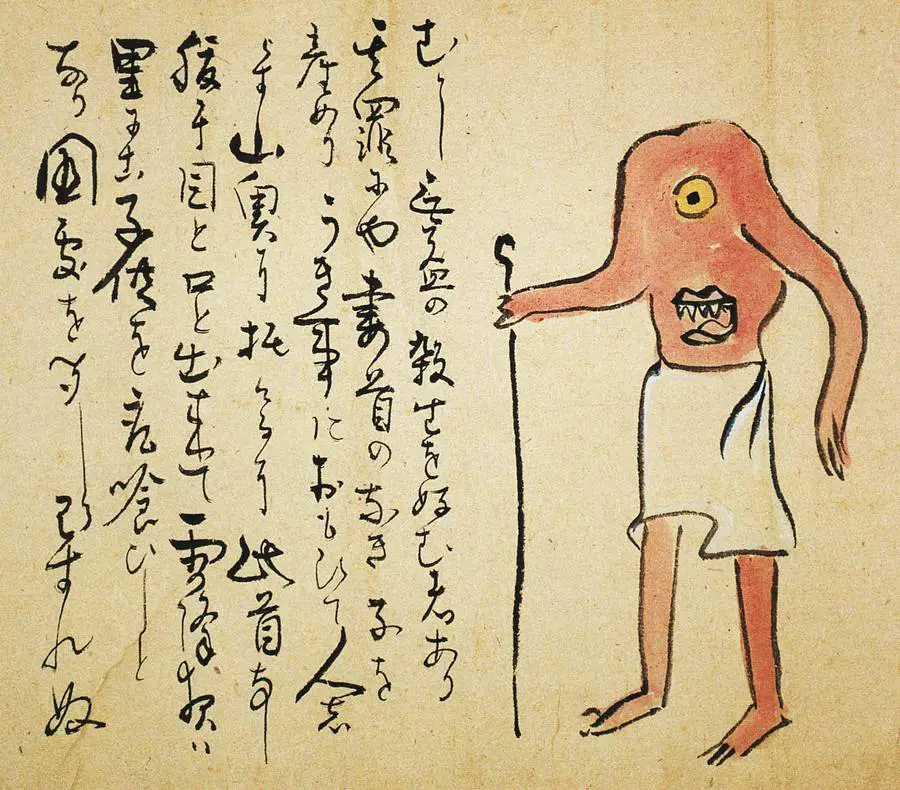
The concept of these creatures has been around for a while now. However, the sudden uprise in popularity happened in 2007, thanks to Hikonyan. The government of Hikone created a Hikonyan mascot. His purpose was to embody the 400th anniversary of Hikone Castle. Fortunately, this was a huge success which has massively increased tourism and merchandise sales.
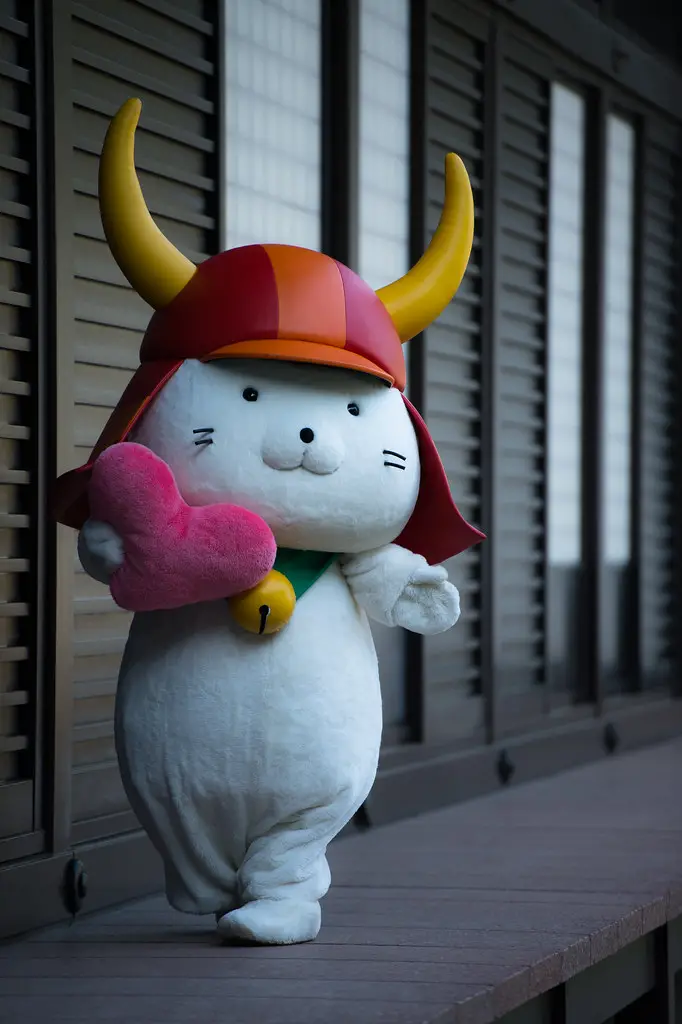
Since then, dozens of mascots started appearing throughout the country. There is even a whole Otaku subculture within this subculture. Moreover, Japan organizes dedicated festivals and events to promote mascots. Today, they even appear in international conferences, expos, and conventions.
Is It Really Just About the Money?
Let’s cut straight to the chase. In 2012, the Yuru-chara market was worth a staggering $16 billion. Although it may seem like that the whole point of these mascots is profit, that’s not exactly the case. While some organizations are definitely in it for the money, some have a higher purpose.
Did you know that Japan has mascots that fight for political goals, such as tax reduction and solar power? Moreover, these mascots play a huge role in improving and popularizing tourism in Japan. They teach both foreigners and locals about the culture, mission, and values. Because of their appealing looks, kids love them. Consequently, they are also a great tool for educating children.
Connection Between Japanese Consumers and Mascots
Mascots can be very convincing thanks to their cute appearance. Because they are so universal, they appeal to the general public quite well. They can impact consumers of all age – old and young. Consequently, companies have realized their potential and started using them for personal gain.
In recent years, a large number of Japanese companies have adopted the so-called ”character marketing.” This strategy enables companies to stand out among competitors. Because mascots have a proven influence, companies started creating dedicated characters for their products. They either design new mascots or purchase the licensing rights to ones that already exist.
Giving a persona to a product has a huge impact on the customers’ decisions. It makes customers feel more connected to the brand. However, the market is slowly becoming saturated. Consequently, this strategy has a lesser impact than it used to. Regardless, mascots have become an integral part of Japanese culture. You can find them everywhere – shops, streets, billboards, television or food packaging.
Different Types of Japanese Mascots
Because the demand for mascots has been at its highest, a couple of different categories have emerged to fill the need. However, we can divide most Japanese mascot characters into three main categories. Those include:
1. Kawaii Mascots
A large number of Japanese mascots have a kawaii-like appearance. Kawaii represents something cute, innocent, and childlike. Because most mascots represent serious organizations, they should look as appealing as possible. They usually have cute features, enlarged eyes, smiley faces, and chubby cheeks. Moreover, this allows them to be kid-friendly as well.

2. Event Mascots
Event mascots are peculiar because they are temporary, unlike other types of mascots. These particular mascots promote certain events, after which they’ll reach their expiration date. Tokyo 2020 Olympic has recently created a mascot contest, where citizens had the chance to choose a favorite temporary character. Miraitowa and Someity won the contest. Someity has the Paralympics logo on her head. On the other hand, Miraitowa has the Olympics logo on his head. Moreover, merchandise inspired by these characters is already available for purchase worldwide.
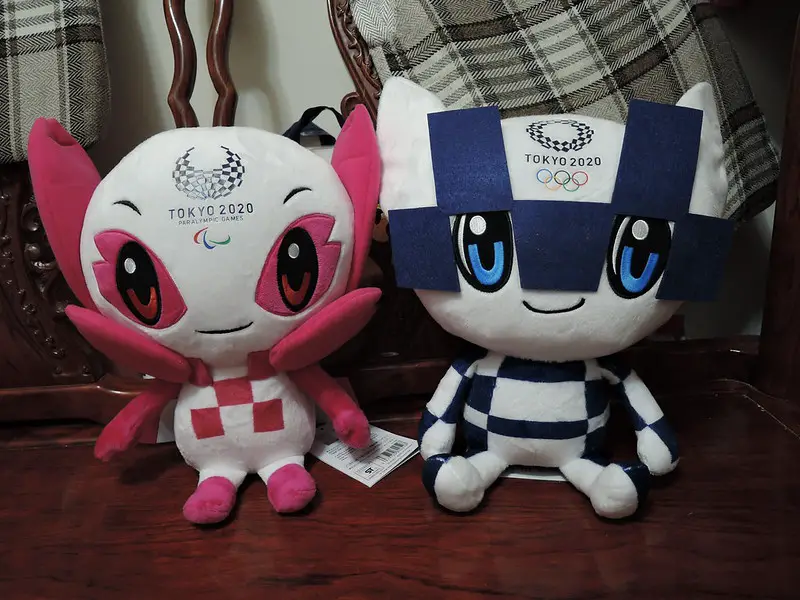
3. Kimo-Kawaii Mascots
Classic kawaii mascots were present everywhere – media, streets, the internet and competitions. The industry became overly-saturated. Artists wanted to introduce something new, which resulted in the creation of kimo-kawaii mascots. Kimo-kawaii mascots represent the combination of cute and grotesque elements. Before, cuteness is what made a character stand out. In the kimo-kawaii movement, the weirder the character is, the better.

Yuru-Chara Grand Prix Competition
Quickly, mascots became an instant hit with the public. As a result, Japan decided to host a Grand Prix mascot competition. In this competition, the most popular yuru-chara is determined by a public vote. The first Grand Prix competition happened in 2010. Since then, these competitions have attracted millions of votes and tens of thousands of visitors. These are all the winners so far:

- 2010 – 169 entrants, Winner – Hikonyan – Hikone, Shiga
- 2011 – 349 entrants, Winner – Kumamon – Kumamoto Prefecture
- 2012 – 865 entrants, Winner – Barysan – Imabari, Ehime
- 2013 – 1,580 entrants, Winner – Sanomaru – Sano, Tochigi
- 2014 – 1,699 entrants, Winner – Gunma-chan – Gunma Prefecture
- 2015 – 1,727 entrants, Winner – Shusse Daimyō Ieyasu-kun – Hamamatsu, Shizuoka
- 2016 – 1,421 entrants, Winner – Shinjou-kun – Susaki, Kōchi
- 2017 – 1,158 entrants, Winner – Unari-kun – Narita, Chiba
- 2018 – Winner – Kaparu – Shiki, Saitama
- 2019 – Winner – Arukuma – Nagano Prefecture
The Dark Side of Japanese Mascots
Because the mascot subculture became so popular and publicized, a lot of individuals wanted to exploit it. In addition, a large number of new, unauthorized mascots started appearing. Some of those were a way for new artists to show off their work, but others had a more sinister plan.
In 2019, a mascot called Chiitan started destroying the city in Southern Japan. Chiitan is an unofficial mascot of Susaki who likes making a mess. He is notorious for breaking cars, kicking people, and dropping trash. You can also find a video named ”Chiitan going to your house,” where the mascot is stealing a baseball bat, hiding it in his pants, and leaving the building. Consequently, this has video raised a lot of concerns. But, it also raised interest among locals and tourists.
That looks creepy, right? However, Chiitan has managed to improve local tourism. Chiitan’s antics are now globally popular – he’s even been featured in international media.
5 Most Popular Japanese Mascots
Japan has thousands of mascots representing different cities, prefectures, businesses, and organizations. However, some mascots stand out in popularity compared to others. Let’s talk about the five most popular mascots in Japan.
1. Sento-Kun – Nara
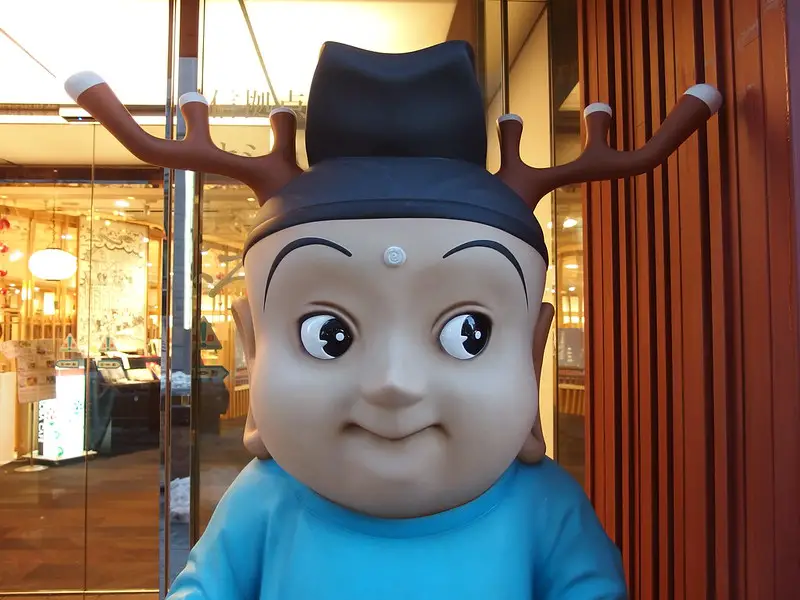
Nara has multiple mascots, one of which is known as Sento-kun. Sento-kun looks like a baby boy that has deer antlers. Because of its appearance and history, it is also called The Budha Boy. It represents Nara’s two famous symbols – deer and the Buddha statue. However, this mascot was also subject to a lot of criticism. Some religious followers find this mascot insulting because of the Buddha reference. Regardless, he is a well-known symbol.
2. Domo-Kun
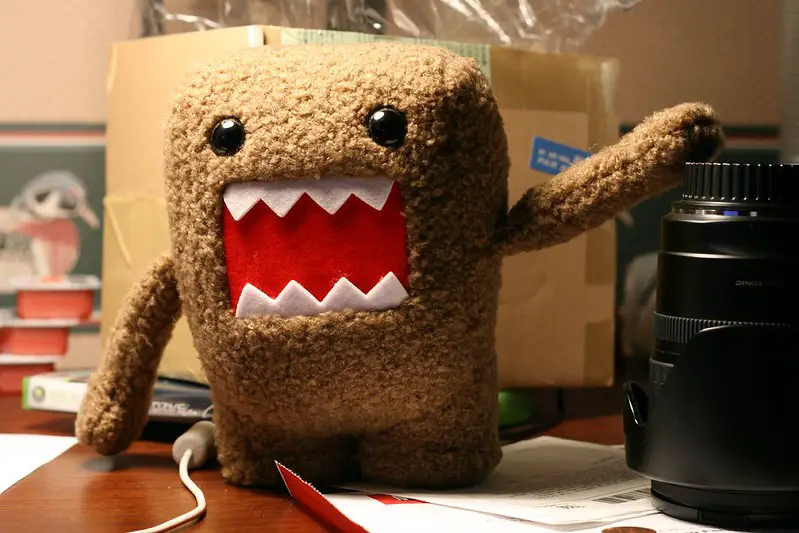
Unlike most other mascots from this list, Domo-kun represents a famous broadcasting organization called NHK instead of a city. His name, Domo, stems from the traditional Japanese greeting ”Domo, konnichiwa.” Domo looks like a large brown fuzzy blob with an open mouth. Surprisingly, he also has a dedicated television series, which made him even more famous and popular.
3. Kumamon – Kumamoto

The government of Kumamoto originally created Kumamon. He looks like a large, black bear with red cheeks. He exists since 2010 and his purpose was to promote tourism after the famous Kyusu-Shinkansen line opened. In 2011, Kumamon won the National mascot survey with over 280,000 votes. After that, in 2012, Kumamoto has earned around 11.8 billion yen on Kumamon’s merchandise.
4. Hikonyan – Hikone

We’ve already mentioned Hikonyan briefly in this article. To repeat, he was the one who brought popularity to this subculture. He looks like a cute white cat with a large yellow-red helmet. His character originates from a local legend. Namely, there was a white cat that saved the Lord of Hikone by giving him shelter from a dangerous storm. Hikonyan has been credited with increasing Hikone’s revenue by 17.4 billion yen.
5. Sanomaru – Sano
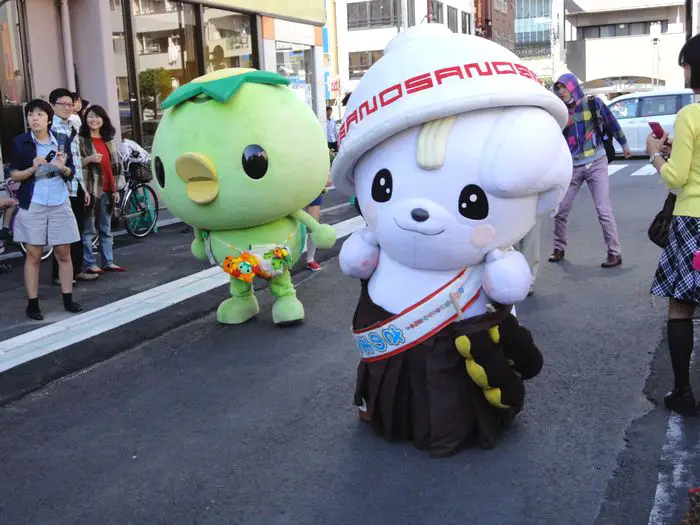
Contrasting to Hikonyan, who is a cat, Sanomaru is an adorable white dog. He is a huge, fuzzy, white puppy with delicate eyes and an adorable face. It’s no wonder why it’s so popular in Japan. Interestingly enough, he also wears a ramen noodle bowl on his head and holds fried potatoes. He won the Grand Prix competition in 2013.
Weirdest Japanese Mascots
In this article, we’ve mostly discussed cute, kawaii-like Japanese mascots. However, did you know that they also have some very scary, weird-looking ones as well? Let’s discuss the five weirdest Japanese mascots.
1. Jinenja – Shiroi
Jinenja is definitely among the weirdest mascots on this list. It looks like a combination of a lot of different elements packed in a weird mascot suit. Jinenja is supposed to be a ninja yam who is in charge of an underground kingdom Neba-land (Neverland). He has a mission to rescue Princess Tororo, who has been kidnapped.
2. Tsukihashi Wataru – Arashiyama
Tsukihashi Wataru represents the Arashiyama shopping district in Kyoto. It looks like a large white blob with a railing on his back. The railing is a reference to the Togetsukyo Bridge, one of the most famous Arashiyama landmarks. Moreover, this mascot also has Kanji letter stitching in the front, which spells out his name. Unlike many other kawaii-like mascots, this one has a more sinister look, reminiscent of a ghost.

3. Gajiro – Fukusaki
Gajiro has been Fukusaki’s mascot since 2015. He looks like a river monster (river imp) with long hair, scales, stitches, and long fingers. It is both realistic and scary. Interestingly enough, the mascot’s costume is repaired by stitching. Seamstresses create visible stitches to achieve an extra-creepy effect. Furthermore, he also has a brother, Gataro. Tourists can find Gataro’s statues around Fukusaki.
4. Baron Ciste – Mukawa
Baron Ciste is a creation of the Mukawa Ciste Committee. The committee is in charge of tourism promotion in Mukawa. Although he is not an official mascot, he is still very well-known and loved by the locals. He looks like a monster aristocrat. He wears a tail tuxedo, a monocle, a bucket hat, fancy shoes, and a cane. Weirdly, his face is ridden with parasites that resemble tentacles. Moreover, Baron Ciste’s name originates from an old French treasure-hunting game.
5. Monbemon – Monbetsu
Monbemon is both creepy and cute at the same time. He looks like Barney’s evil zombie cousin. He has a purple-pink body, huge teeth, dark protruding eyes, and small hands. The story says that Monbemon ventured into the Okhotsk Sea to look for food and gold. However, he sunk to the bottom and spent decades sleeping underneath. Supposedly, he returned back in 2012 because of global warming.
6. Melon-Kuma – Yubari
Melon-Kuma represents Yubari city in Hokkaido. This particular city is famous for bears and melons. Consequently, Melon-Kuma was created. He looks like a huge black bear with a melon head. Sometimes, during mascot gatherings, this bear would run up to other mascots and scare them. Moreover, he is not an official mascot of this city. Regardless, he is loved by many.
7. Pinging – Japanese Sunwolves
Then, we have Pinging, who has made quite a name for himself recently. He represented Japan’s rugby team – Sunwolves. Pinging looks like a crazy, aggressive wolf. He gained a lot of international attention because of his scary looks. However, he isn’t an official mascot anymore. The team replaced him with a cute, friendlier version.
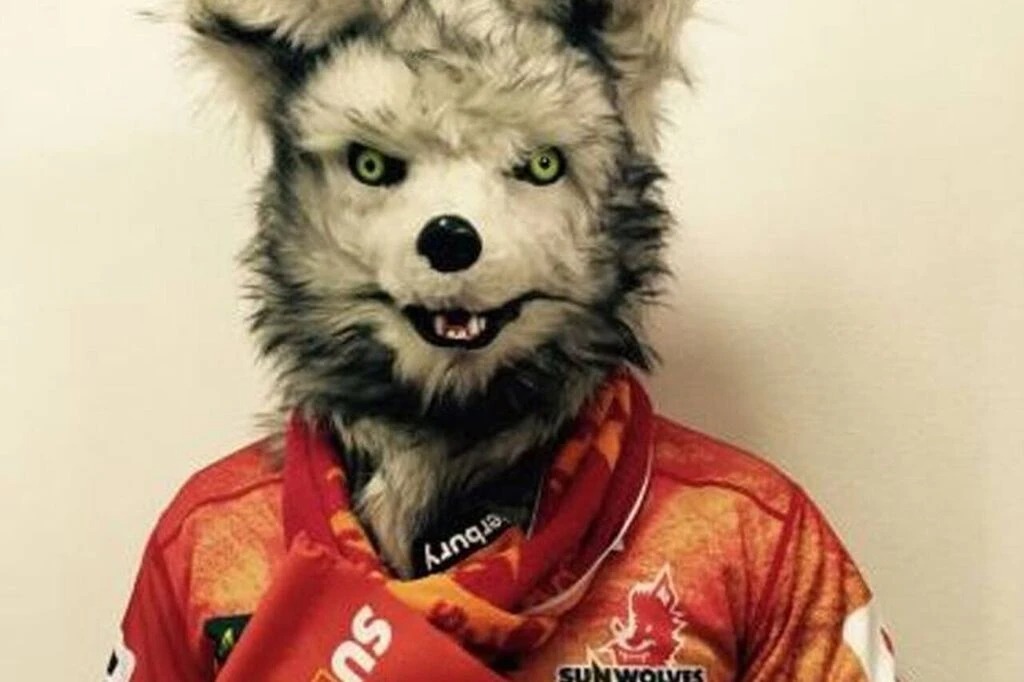
8. Oji-Nyan – Ota Productions
Lastly, we have the creepiest ones yet. Oji-Nyan looks like a large, yellow cat with a white human face. He represents Ota Productions. Supposedly, this character loves singing and dancing. Unfortunately, the public isn’t as keen on Oji-Nyan as the company would like. Under his social media, you can often find comments that say ”who asked for this,” ”this is the worst mascot you’ve created so far”.
Related Questions
What Are Japanese Mascots Called?
Japanese mascots are also known as yuru-chara (Japanese – ゆるキャラ). Another mascot-related term, gotochi-kyara has been popularized in recent years. Gotochi-kyara means ”local mascot.” Therefore, this term references only local mascots.
Why Are Mascots Popular in Japan?
They are popular because they represent Japanese cities, regions, organizations, events, and businesses. These characters are highly publicized and can be seen everywhere in Japan.
Who Is Nyango Star?
Nyango star is a famous Japanese mascot that looks like an apple-shaped cat that plays the drums. Luckily, he became famous because of social media videos. One of such videos presents Nyango Star playing Anpanman’s March. That is the theme song of a popular animated series named Soreike.
What Does Miraitowa Mean?
Miraitowa is one of the two mascots chosen for the 2020 Tokyo Olympics. The name Miraitowa is a combination of two Japanese words that translate to ”eternity” and ”future.”
Conclusion
Japan is a very special country with a diverse cultural background. It is known that the Japanese have a very special connection with fictional characters. Mascots are no exception. They have a wide application in both business and education, making them very valuable. Moreover, they have become an integral part of Japanese society. One thing’s for sure – they are just adorable…well, at least most of them are!


